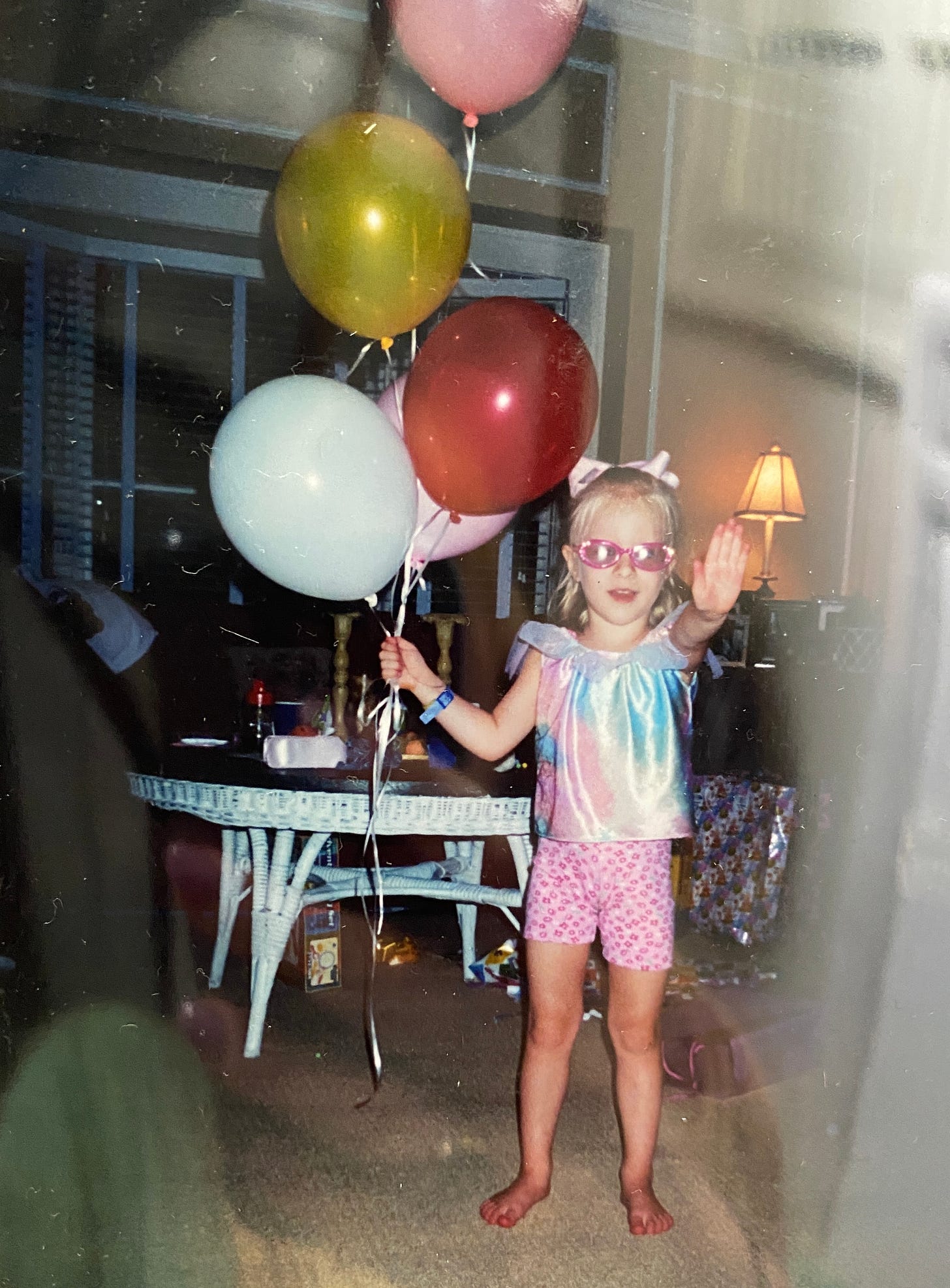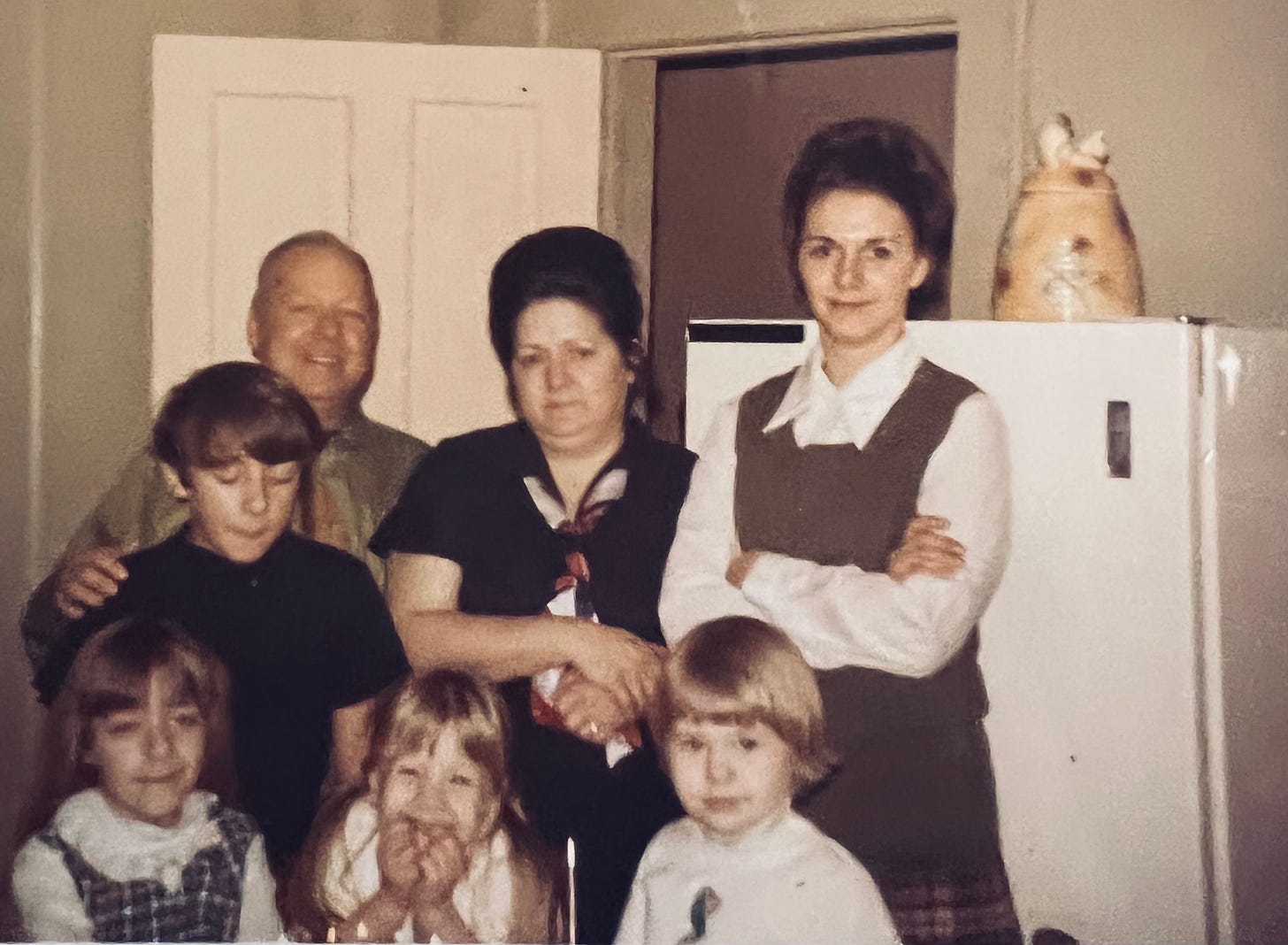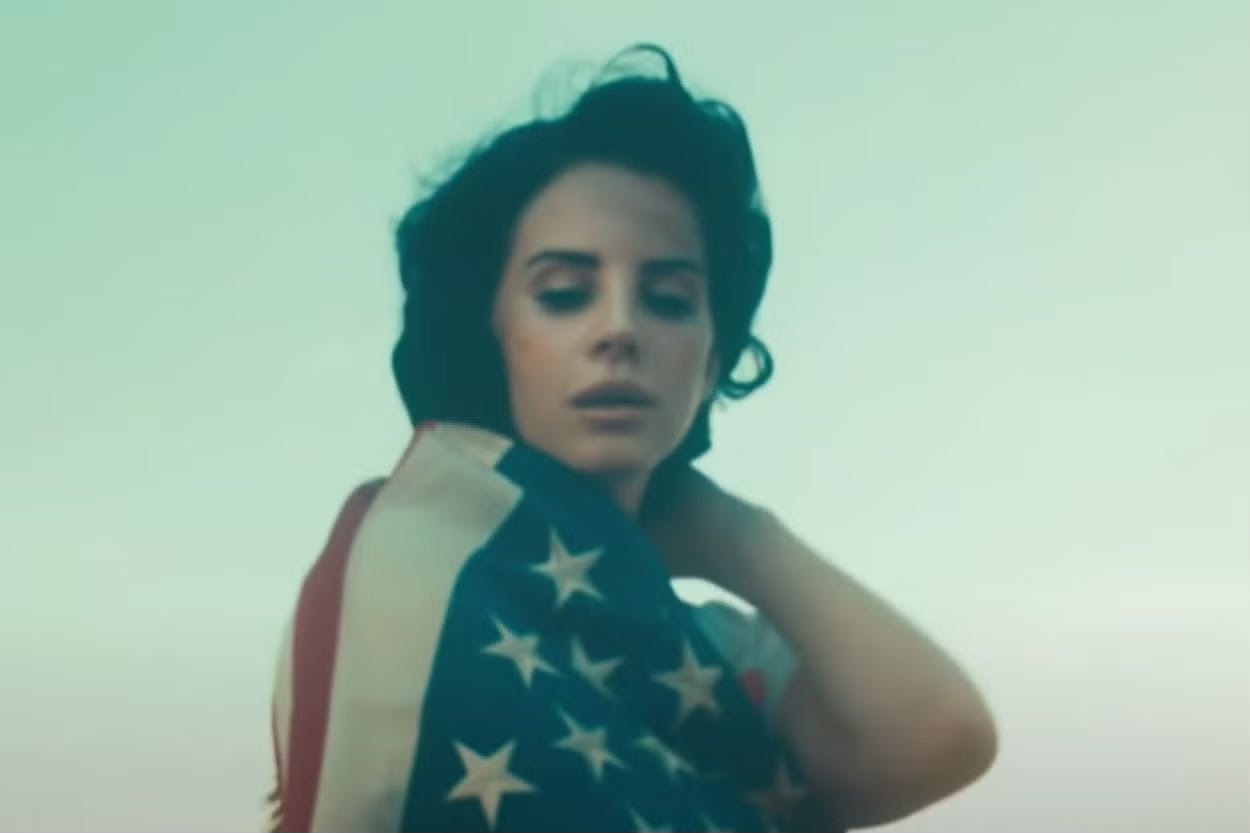I was born on the Fourth of July in San Francisco, in a hospital on a hill overlooking the distant stretch of the Golden Gate Bridge. The way my parents tell it, it was early evening and shortly after I arrived, fireworks began bursting wide and bright in the sky. California summer in the late nineties was full of sunshine and possibility. I was not due for another six weeks and spent a handful of days in the NICU. My mother tells me how when they finally took me home, we drove over the bridge and I stared with wonder out at the coastline as the fog broke, the rolling hills and the blue water.
This was America, and bringing me home to the west coast was, in many ways, my parents’ own version of the American dream—my father from the cold and cornfields of Midwest Nebraska, my mother from the Appalachian mountains of Western North Carolina. My father came from a family of Italian immigrants and went to college on a swim scholarship; my mother was a first-generation college student who later went on to get an M.A. from Columbia University. My parents met in New York City, got married in North Carolina, and eventually found themselves in California, where I was born and where, just a few years later, they would divorce, my mother and I moving back to North Carolina to be closer to family. I grew up between the coasts, between mountains and hills that could not have felt further from one another. I have spent 25 years trying to figure out where I can call home, trying to parse my identity out in the regions that have defined my life and all the myths, promises, and stereotypes that go along with them.
On my birth announcement, my parents wrote that I had entered the world and “declared my independence.” As a child, I was proud to share a birthday with America, and outfitted myself in red, white, and blue, feeling special as I watched fireworks go off in the sky, always subtly convincing myself in my head that they were for me. I was blonde-haired and blue-eyed and I looked like the stereotypical picture of an American child. Every time I show my ID, I am asked questions about this birthday, how fun it must be, and as an adult I never quite know what to say. I have fled the country on my birthday as often as possible. I spent one season in college working at a summer camp in Canada, where I met one of my closest friends, who hails from Ireland and happens to share this birthday. I realized that summer that I was often the only American in the room, an experience most Americans have never truly had. On the Fourth of July that year, we rented a schoolbus that drove us into town. We went to Wal-Mart for candy and to a local pub for some beers, which is probably the most American thing we could have done. It was my twenty first birthday. It felt normal and wonderful and far away from the tension I often feel around my birthday in America, and indeed the tension I often feel when I think about this country at all.
If you are American, you are used to thinking often about your country. America is a complicated place. Plenty of folks I know here would willingly shed their status as an American; there is no shortage of Americans who idolize and fantasize about life elsewhere—a stint in Europe, New Zealand, Australia. In the field of anthropology, which I have been loosely tethered to throughout my academic career, scholars seem to choose countries on a whim to move to and become an “expert” of (by expert I generally mean in the eyes of other academics rather than by communities themselves). Rarely are we encouraged to interrogate the places we call home, to see them as valuable areas of study. Whether I like it or not, my life has been intertwined with America since I first entered this world, and it has always been this strange mythos, this conflicted identity, that drives my work.
Next month, I will graduate from the University of North Carolina at Chapel Hill with my M.A. in Folklore (housed in our American Studies department) and later this summer, I am thrilled to say that I officially accepted an offer to begin working towards my PhD in English at Duke. I’m excited to take this next step in studying the production of American culture and to be able to continue to think critically about the places that I call home.
For the last two years, I have been immersed in the study of regional identity; my graduate thesis work examines the intersections between structures of development and tourism that lean into hollow ideologies of “Old South” culture, working to preserve what we box in as “heritage” at the expense of vernacular voices, knowledge, and desires. These development structures, in turn, are creating a climate crisis that is detrimental. The South Carolina Lowcountry, where I research and a place my family has now called home for the last fifteen years, ranks at some of the highest threat of climate risk, particularly in relation to diminishing economies due to changing environments. These risks are deeply entangled with ideology; the South is a heavily contested region that is often held back by loyalty to its own mythology. These mythologies build the foundation of my doctoral work, which will examine regional identity in American literature, with a particular focus on speculative fiction and our portrayals of a future America. I am interested in the stories we tell ourselves about who we are and the lived implications—the way these stories become beliefs that we devote ourselves to and the way these beliefs contradict and conflict, splintering across the country.
Can we define a singular American identity anymore? Could we ever? As a folklorist, I of course am interested in the production of Americana culture and the way it capitalizes on loose stereotypes of rural Southern communities, often by those from elsewhere. Lana Del Rey’s use of Americana iconography as she built her career (and we must talk about this iconic Coachella entrance last weekend, which I cannot stop watching; there’s a specific brand of American woman that permeates throughout pop culture, particularly in this new trend of country music: think Coyote Ugly! True Blood! The Warden in Holes! Women in cowboy boots and leather jackets, unafraid to market their sexuality! What does this woman—and let me also say that this type of woman was who I grew up idolizing—tell us about what it means to be female-identifying in America?). The long history of white rock musicians capitalizing on Black culture to craft—and sell—an American identity. Continual portrayals of Appalachia as both the last beacon of true American identity and the most backwards region in the country. I point here towards Dorothy Noyes (2014)’s excellent thoughts on zombification as a third approach to cultural survival: “Heritage,” she writes, “is what you freeze cryogenically at the point of death; legacy is what you keep on life support because you can’t afford to kill it off; and zombie is the thing that you try to kill but can’t.” She continues on the zombification of Appalachia and its connection to broader American identity:
“Zombification is a third possible treatment of the kind of people we once called the folk. It is not a buying-off but a refusal to engage the problematic population. It is apparently in American pop-cultural representations of rural areas, and notably of Appalachia. A heavily forested mountain region, difficult of access, with a pervasive but historically elusive Native American presence displaced by mostly Scots-Irish settlers in the eighteenth century, Appalachia was not easily incorporated into the United States’ evolving machinery of governance… Appalachia has long been the site of tax resistance and some war resistance, a place of refuge for criminals and deserters. At the same time, since the nineteenth century it has been imagined as the true reservoir of American folk identity, inhabited by the descendants of those who fought the Revolution, mountaineers who are still self-reliant, beholden to nobody; ethnically pure, and practicing their age-old traditions (Batteau 1990; Hufford 2006; Whisnant 2008). Appalachia is one of certain culturally marked regions in America, imagined as deviant not through creolization, like Louisiana, or border conflict, like Texas, but precisely by being at the heart of the old white settler nation, closed in on itself, incestuous. Appalachia is deep America: it is folk.”
There are many—both in academia and in broader pop culture studies—exploring the creation of American identity. I’ve always resonated with Claire Vaye Watkins’ writings on the American West, the region most heavily associated with ideas of possibility and destiny; I often come back to this 2021 interview she did with the Los Angeles Times, where she describes the West as “harder to love up close”. I feel this deeply about the South, but like Watkins, I also believe there is something to be said for choosing to love it up close. Each year I have my students watch Beyoncé’s “Formation” video, which I think is one of the best explorations of contemporary American South culture we have. Adia Victoria’s album, A Southern Gothic, one of my best albums of all time. Ethel Cain, of course.
One thing to point out here is that these are all artists working in the realm of the regions they call home; they are working through feelings of complication about their relationship to the places they know and understand. Regular readers of this newsletter will know that I am a big proponent of encouraging people to turn to their own communities as sources of inspiration—to take a critical look at the worlds they can see up close. Though I study speculative fiction, I find that work rooted in the purely speculative often leads to more harm than good. In order to think about where we go next, we must first be willing to look around—and we can’t look around without also recognizing the ghosts of ideology and promise that haunt and permeate throughout America. It’s the classic quote of the Southern Gothic: “The past is never dead. It’s not even past,” wrote Faulkner. The past is all around us, our landscape littered with the bones of our beliefs both past and present. Here is America: a lack, as Andrea Portes writes in Hick:
“But somewhere in America, between the freeways and the Food-4-Less, between the filling stations and the 5-o-'clock news, behind the blue blinking light coming off the TV, there is a space, an empty space, between us, around us, inside us, that inevitable, desperate, begs to be filled up. And nothing, not shame, not God, not a new microwave, not a wide-screen TV or that new diet with grapefruits, can ever, ever fill it. Underneath all that white noise there's a lack.”
What stories lie in that lack? There’s something to be said for exploring the absence, something to be said for questioning if all of America is built on lack, if our entire identity is founded on simulacra, as Baudrillard explored. What lies in these hollows, in these spaces between? What can they tell us about who we are and the place we call home? I don’t have answers for those questions yet, but they are the ones I am asking, and the ones that I will be writing about here more as I continue my academic career. Thanks for bearing with the absence as some of these decisions were made; I’m thrilled to be able to stay in North Carolina for the time being and thrilled to be back to exploring these topics with you all here.







So glad to see your essays in my inbox again <3
Loved reading this, brought back so many memories!